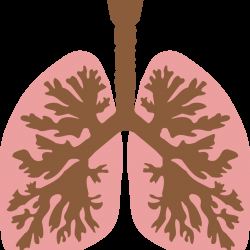We often tend to think of rural environments as being less polluted than our cities — fewer cars, less air pollution, etc. Thus we might expect folks living in rural areas to have fewer lung-related ailments. But a recent report from the CDC suggests that the opposite is true, at least with respect to Chronic Obstructive Pulmonary Disease, or COPD.
COPD was the 4th leading cause of death in the United States in 2016. COPD includes emphysema, chronic bronchitis and sometimes asthma, and occurs when the tiny air sacs in the lungs (the alveoli, which is where oxygen exchange occurs) become damaged and no longer can function. It's a progressive and irreversible condition, leading to an inability to breathe normally, and requiring oxygen supplementation in its later stages. And it's not a trivial public health issue — in 2014 over 15 million Americans reported that they had been diagnosed with COPD. Smoking is of course the major risk factor for COPD, but there are other exposures that can contribute to a person's risk — air pollution, for example, as well as childhood lung infections and genetic predispositions.
Writing in the CDC's Morbidity and Mortality Weekly Report, Dr. Janet B. Croft and colleagues analyzed data from the 2015 Behavioral Risk Factor Surveillance System (BRFSS), Medicare hospital records, and death certificate data from the National Vital Statistics System (NVSS) to ascertain variations in the prevalence of COPD in rural vs urban populations. In addition to the 15 million reported diagnoses referred to above, they found that there were 335,000 Medicare hospitalizations and 150,350 deaths in which COPD was the listed underlying cause.
They found that the age-adjusted prevalence of diagnosed COPD among adults (18+ years) was 4.7 percent in populations inhabiting large metropolitan areas, compared to 8.2 percent in those living in rural areas. Seven states had the highest reported prevalence: Alabama, Arkansas, Indiana, Kentucky, Mississippi, Tennessee and West Virginia. Of these, Arkansas, Kentucky, Mississippi and West Virginia had the highest percentages of rural areas.
The authors hypothesized that these results could be related to a variety of factors in addition to the major known risks such as tobacco smoking, environmental and occupational exposures. These additional correlates included older ages, low socioeconomic status and a history of asthma. Also, they suggested that rural populations might have a greater proportion with a smoking history, more exposure to secondhand smoke, but less access to smoking cessation programs. Rural populations might have unique exposures to "mold spores, organic toxic dust, and nirtrogen dioxide which are associated with COPD risk."
While COPD is irreversible, there are techniques that help manage it and help maintain lung function such as "pulmonary rehabilitation, oxygen therapy, and some medications." The authors also noted
Barriers to health care in rural areas include cultural perceptions about seeking care, travel distance, absence of services, and financial burden. Access to early diagnosis, prompt treatment, and management of COPD by a pulmonologist is difficult for rural adults with COPD because of limited geographic accessibility to this COPD specialty.
While there are pulmonary rehabilitation programs, the authors also said that rural residents might not have them easily accesible, thus they suggested
Provision of online health care services (i.e., telemedicine) in rural areas could reduce some of these barriers by providing health education and support websites to patients and caregivers, appointment assistance, and ability to check assessment results online; however, lack of Internet access is still a barrier in some rural populations.
These data indicate which populations should be targeted for additional assistance to better reduce the burden of COPD on individuals as well as on the healthcare system.

